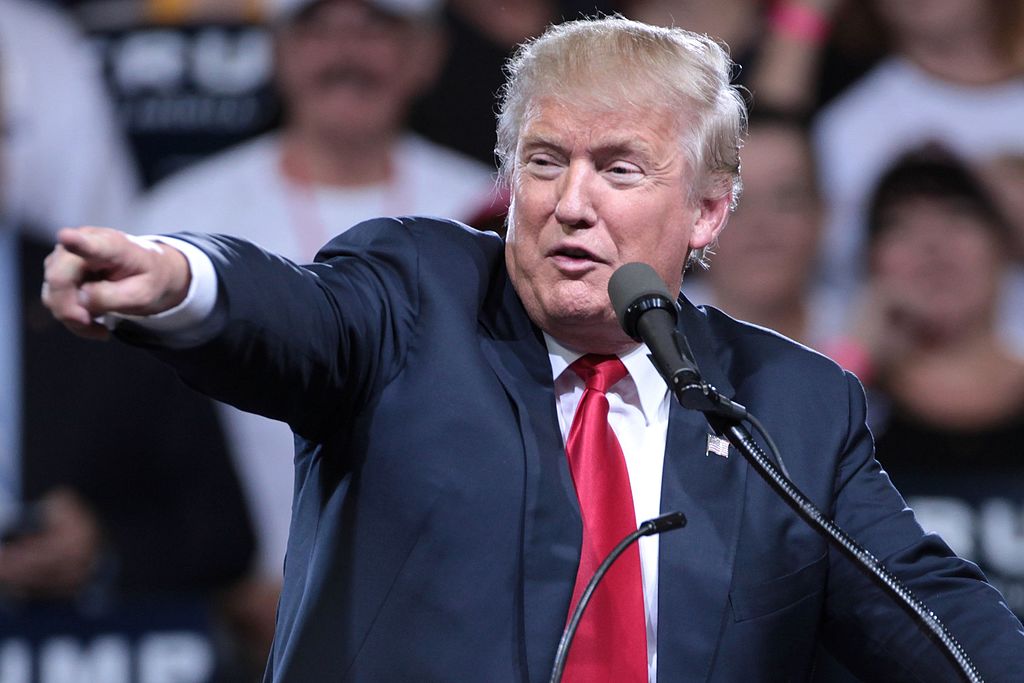As Donald Trump prepares to take office in 2025, his policies on protecting endangered species are drawing both praise and scrutiny. Trump has pledged a comprehensive approach to conservation, aimed at balancing economic development with wildlife preservation. However, critics argue that his administration must provide more details to ensure these promises translate into action.
Conservation Plans and Economic Growth
Trump's proposed policies emphasize collaborative efforts between
government agencies, private organizations, and local communities to protect endangered species while promoting economic growth. His strategy reportedly includes:
- Habitat Restoration Projects: Allocating federal funding to rehabilitate natural habitats for endangered animals, particularly in regions impacted by urban development or climate change.
- Incentivizing Private Conservation Efforts: Offering tax breaks and financial incentives to private landowners and corporations that actively support wildlife conservation initiatives.
- Modernized Environmental Regulations: Implementing streamlined environmental policies to expedite approvals for conservation projects while ensuring compliance with the Endangered Species Act (ESA).
- Advancing Research: Supporting scientific studies to identify critical habitats and track species populations more effectively.
In a statement, a spokesperson for Trump’s transition team highlighted the administration’s commitment to “striking a balance between development and environmental stewardship, ensuring a sustainable future for both humans and wildlife.”
Controversies and Public Reaction
While the outlined policies appear promising, environmentalists remain cautious. Critics point to Trump’s mixed track record on environmental issues during his previous term, citing deregulation efforts that some argue prioritized industry over conservation.
Online reactions to Trump’s endangered species policies reveal a divided public:
- @WildlifeAdvocate2025: “Great to hear Trump is finally taking conservation seriously. Hope this isn’t just political posturing!”
- @EcoCritic: “How can he promise to save species while rolling back environmental protections? Actions speak louder than words.”
- @HabitatHero: “Tax breaks for conservation? That’s actually a smart move if implemented correctly. Let’s see how it pans out.”
- @ClimateWarriorX: “Protecting endangered species means addressing climate change. Does Trump’s plan even consider that?”
- @ConservationCollaborator: “Private-public partnerships could work, but transparency is key. We need to see detailed plans, not just headlines.”
- @SkepticObserver: “Trump talking about protecting wildlife? Feels like a publicity stunt. Show us the data and funding commitments.”
Concerns also arise regarding the potential conflicts between development projects and wildlife habitats. Conservationists argue that without clear boundaries, policies may inadvertently harm the ecosystems they aim to protect.
Balancing Ambition with Realism
Trump’s proposed policies have sparked meaningful dialogue on how the U.S. can better safeguard endangered species. Experts stress the importance of clear, actionable plans and adequate funding to ensure success.
While his administration’s conservation initiatives hold potential, they must address concerns about accountability, implementation, and long-term sustainability. The public will be watching closely as Trump’s policies take shape in 2025.



 U.S. Soybean Shipments to China Gain Momentum as Trade Tensions Ease
U.S. Soybean Shipments to China Gain Momentum as Trade Tensions Ease  Trump Claims He Will Void Biden Documents Signed with Autopen
Trump Claims He Will Void Biden Documents Signed with Autopen  U.S. Repatriation Flight Carrying 266 Venezuelan Migrants Lands in Caracas
U.S. Repatriation Flight Carrying 266 Venezuelan Migrants Lands in Caracas  Hong Kong Faces Low Turnout in “Patriots-Only” Election Amid Public Grief After Deadly Fire
Hong Kong Faces Low Turnout in “Patriots-Only” Election Amid Public Grief After Deadly Fire  Trump Administration Plans Major Rollback of Biden-Era Fuel Economy Standards
Trump Administration Plans Major Rollback of Biden-Era Fuel Economy Standards  Trump’s Name Appears on U.S. Institute of Peace Ahead of Rwanda–Congo Deal Signing
Trump’s Name Appears on U.S. Institute of Peace Ahead of Rwanda–Congo Deal Signing  Putin Concludes High-Level Talks With Trump Envoy on Ending Ukraine Conflict
Putin Concludes High-Level Talks With Trump Envoy on Ending Ukraine Conflict  UN General Assembly Demands Russia Return Ukrainian Children Amid Ongoing Conflict
UN General Assembly Demands Russia Return Ukrainian Children Amid Ongoing Conflict  U.S.–Russia Peace Talks Stall as Kremlin Rejects Key Proposals
U.S.–Russia Peace Talks Stall as Kremlin Rejects Key Proposals  Trump Warns Drug-Trafficking Nations as Colombia’s Petro Issues Strong Rebuttal
Trump Warns Drug-Trafficking Nations as Colombia’s Petro Issues Strong Rebuttal  Cuba Reaffirms Anti-Drug Cooperation as Tensions Rise in the Caribbean
Cuba Reaffirms Anti-Drug Cooperation as Tensions Rise in the Caribbean  China Urged to Prioritize Economy Over Territorial Ambitions, Says Taiwan’s President Lai
China Urged to Prioritize Economy Over Territorial Ambitions, Says Taiwan’s President Lai  Pentagon Probe Finds Hegseth’s Use of Signal Risked Exposing Sensitive Yemen Strike Details
Pentagon Probe Finds Hegseth’s Use of Signal Risked Exposing Sensitive Yemen Strike Details  U.S. Defense Chief Pete Hegseth Defends Controversial Second Strike on Suspected Drug-Smuggling Vessel
U.S. Defense Chief Pete Hegseth Defends Controversial Second Strike on Suspected Drug-Smuggling Vessel  Trump and Lula Discuss Trade, Sanctions, and Security in “Productive” Phone Call
Trump and Lula Discuss Trade, Sanctions, and Security in “Productive” Phone Call  Maduro Confirms “Respectful” Call With Trump, Signals Openness to Diplomatic Dialogue
Maduro Confirms “Respectful” Call With Trump, Signals Openness to Diplomatic Dialogue  Australia Progresses AUKUS Review as U.S. Affirms Strong Support
Australia Progresses AUKUS Review as U.S. Affirms Strong Support 



























